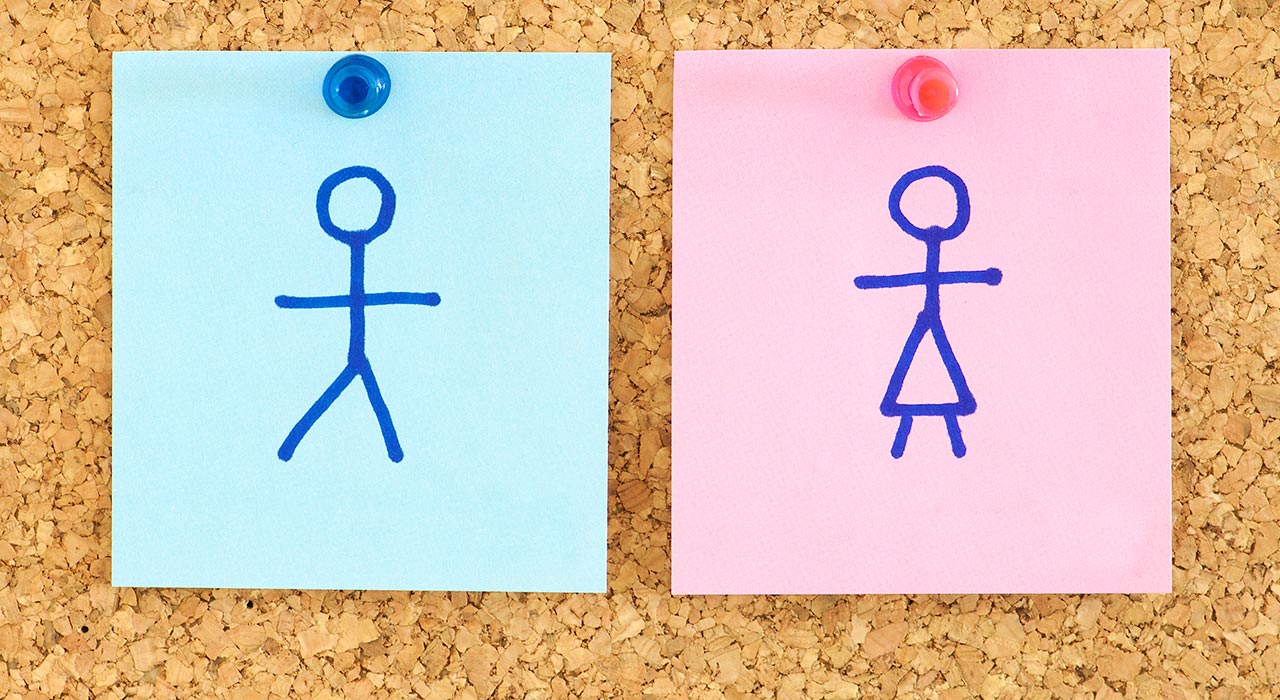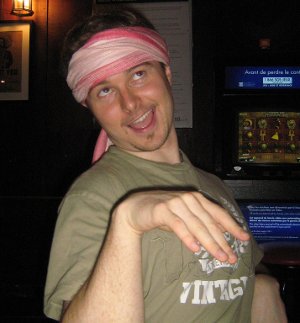How to Tackle Gender Issues in Your Target Language
Masculine or Feminine (or Neuter)?
This can be one of the most frustrating things for beginner to intermediate learners; the added information they have to learn of associating a gender with each word. Not only can it seem pointless to assign a gender to inanimate sexless objects (especially for native English speakers who aren't used to this), but it can be confusing! Mark Twain amusingly put it (on German):
“A person's mouth, neck, bosom, elbows, fingers, nails, feet, and body are of the male sex, and his head is male or neuter according to the word selected to signify it, and not according to the sex of the individual who wears it! A person's nose, lips, shoulders, breast, hands, and toes are of the female sex; and his hair, ears, eyes, chin, legs, knees, heart, and conscience haven't any sex at all…
Now, by the above dissection, the reader will see that in Germany a man may think he is a man, but when he comes to look into the matter closely, he is bound to have his doubts; he finds that in sober truth he is a most ridiculous mixture; and if he ends by trying to comfort himself with the thought that he can at least depend on a third of this mess as being manly and masculine, the humiliating second thought will quickly remind him that in this respect he is no better off than any woman or cow in the land.”
How are you supposed to learn all of these seemingly random associations? And most importantly, why are languages so random in assigning gender? It almost seems like the “creator” of each language blind-folded himself, span around in circles to make himself dizzy and pointed at random objects with someone noting what sex to assign to them…
It had been suggested to me that I just simply learn the gender with each noun that I learn; sure(!) There are only anywhere up to a million words in a language – I'll just imagine little girly dresses on keys or paper with bulging manly muscles. Or just learn the word with its article (el/la, le/la, der/die/das etc.) and repeat it over in your head thousands of times until it “sinks in”. I don't think so.
I was struggling with this concept when I first started learning languages, but then something clicked for me (as it does for most other learners, and I hope this post helps beginner learners); it's not the OBJECTS that have the gender, it's the WORDS!
Words have gender, not objects
This realization makes a world of difference. The conceptual one is the most important one, since it's confusing to talk about a male victim in Latin languages, but be obliged to assign feminine articles and adjectives. The word doesn't care what gender the object it describes actually is. The word victim (la victima/victime in Spanish/French for example) is feminine. The word coche (in Spanish) is masculine and happens to describe a car.
This helps a lot in also figuring out why a word is a certain gender. If you try to imagine why an object is masculine or feminine you will need crazy jumps of logic indeed! But a word can easily be masculine or feminine and have nothing to do with actual sexual gender, or necessarily being “manly” or “girly”. These are just convenient titles for different categories, and may as well be yin and yang or positive and negative. Other than actually being associated with people of that gender (like father, sister, girlfriend), these gender associations are useless. Analysing parts of objects to find why they are manly or girly won't help, but analysing parts of words to see patterns, will give you an indication of its grammatical “gender”.
Word endings and categories are the key
Rather than associating each gender with each word, we save ourselves a lot of time if we focus on the patterns. Every language I've studied has these patterns, and they are not that complicated. At worst, there is a list of a few dozen simple guidelines to follow, but once you learn these and test yourself a few times they will stick.
The most obvious of these “guidelines” is word endings. In Spanish, Portuguese and Italian they make it quite easy for us; nearly all masculine words simply end in -o (the vast majority) and the rest in -ma (like problema), -ista and a short list of others. Feminine words tend to end in -a, once again, this is the majority. A few others that are feminine in Spanish include -sión, -ción, -dad, -tad, -tud (with corresponding similar endings in Portuguese and Italian). There are an extremely small handful of exceptions, like mano (mão in Portuguese) and radio, both feminine. When you look at it this way, categorising words based on their endings rather than their meanings, it doesn't matter what the word actually means, you can still figure out its gender quite quickly.
There are plenty of words in those languages and even much more in French, that end in -e. These can go either way, but a lot of them are still covered by rules. In French you may have to go back a few extra letters; instead of just -e, does it end in -age or -isme, -ège, -ble, -ie etc.? Here is a pretty good list of French word endings (and their exceptions). Learning that list alone will cover a huge amount of words!
Unfortunately, not all words fit neatly into ending-categories. Another pattern is that some categories tend to be a particular gender. Words for machines, and especially concepts (-ness words in English, like happiness, freedom etc.) tend to be feminine. But this normally directly correlates to word endings too (-té in French, -dad in Spanish, -keit in German, -ost in Czech, etc.).
Rather than learning each word's gender, you are better learning these endings and then learning the few exceptions to them. A good grammar book will categorise these for you, and otherwise you can probably find out good non-exhaustive guides for your particular studied language just by Googling it! Learning these lists of word-endings is so much less work! When I was learning Czech a few months ago, despite the fact that it has three genders and that nearly all words don't resemble anything like what I've seen before, it was laughingly easy and extremely little work to learn noun genders – they almost always followed extremely consistent rules.
On a side note I can say that I learned French genders extremely quickly. If you plan on learning several languages, then when dealing with languages of the same family (Latin languages in my case) their genders are actually the same! This has extremely few exceptions (like la minute (fr) vs el minuto (es)). Thanks to putting all the work into Spanish, I actually ask myself what the gender in Spanish is and that usually works in French if the word happens to be the same. 🙂
If you don't know, guess!
If you know all your word endings and you still don't know what gender a word is, just guess! Statistically speaking, most languages tend to favour masculine as a gender (sexist, I know), especially when it doesn't fit well-known word ending patterns. If you are wrong, then so what? In the early stages, communication is extremely important, and as long as you are improving with time and making less and less mistakes, then it's actually ok to use the wrong article/adjective for that word. Speakers will understand you, and communication is the reason you are learning this language! If not knowing a word's gender is holding you back from saying it, just say it anyway! You can try your luck, and if you are wrong, someone will correct you (or you can look it up later to check) and you will have learned something 🙂
Remember that speaking a language is not always a test that you have to be 100% right in. Even if you are not that confident in genders, just say the word with whatever gender feels right (for the word not the object)! I strongly disagree with those who have told me that you should “wait until you're ready” and not ever practise in the early stages and make mistakes (for fear of them “sticking”). That's ridiculous, and you will never ever be ready with that kind of perfectionist attitude. I needed to make thousands of mistakes to get where I am today, and I will make thousands more as I continue learning languages. It's just part of the game 🙂




Social